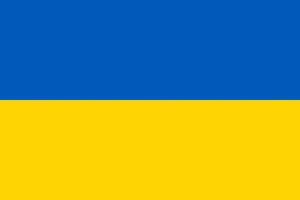Language/Ukrainian/Grammar/Nouns-and-Gender
Introduction[edit | edit source]
Welcome to the lesson on Ukrainian Grammar! In this lesson, we will delve into the fascinating world of Ukrainian nouns and gender. Nouns are an essential part of any language, and understanding their gender is crucial for proper communication. By the end of this lesson, you will be able to identify and correctly use masculine, feminine, and neuter gender nouns in Ukrainian. Let's get started!
Ukrainian Nouns and Gender[edit | edit source]
In Ukrainian grammar, nouns are divided into three genders: masculine, feminine, and neuter. The gender of a noun is determined by its ending or, in some cases, by its meaning. It is important to note that the gender of a noun affects the forms of adjectives, pronouns, and verbs that accompany it. Let's explore each gender in more detail.
Masculine Nouns[edit | edit source]
Masculine nouns in Ukrainian typically end in a consonant or a soft sign (ь) and have various declension patterns. Some masculine nouns also end in -а or -я. Here are a few examples:
| Ukrainian | Pronunciation | English |
|---|---|---|
| хлопець | khlo-pets' | boy |
| стіл | steel | table |
| вітер | vee-ter | wind |
As you can see, the endings of these nouns do not indicate their gender. Therefore, it is important to memorize the gender of each noun when learning new vocabulary.
Feminine Nouns[edit | edit source]
Feminine nouns in Ukrainian typically end in -а, -я, or -ість. Here are a few examples:
| Ukrainian | Pronunciation | English |
|---|---|---|
| дівчина | div-chee-na | girl |
| книга | knee-ha | book |
| краса | kra-sa | beauty |
Unlike masculine nouns, the endings of feminine nouns often indicate their gender. However, there are exceptions, so it is always a good idea to consult a dictionary or a native speaker to confirm the gender of a noun.
Neuter Nouns[edit | edit source]
Neuter nouns in Ukrainian typically end in -о or -е. Here are a few examples:
| Ukrainian | Pronunciation | English |
|---|---|---|
| море | mo-re | sea |
| вікно | vee-kno | window |
| дерево | de-re-vo | tree |
Similar to masculine nouns, the endings of neuter nouns do not always indicate their gender. It is essential to learn the gender of each noun individually to ensure accurate usage.
Gender Agreement[edit | edit source]
In Ukrainian, adjectives, pronouns, and verbs must agree with the gender of the noun they modify or accompany. Let's look at some examples:
Adjectives[edit | edit source]
When describing a noun with an adjective, the adjective must agree with the gender of the noun. Here are a few examples:
| Ukrainian | Pronunciation | English |
|---|---|---|
| великий стіл | ve-ly-kyi steel | big table (masculine) |
| гарна книга | har-na kneeha | beautiful book (feminine) |
| маленьке дерево | ma-len-ke de-re-vo | small tree (neuter) |
As you can see, the endings of the adjectives change to match the gender of the noun they modify.
Pronouns[edit | edit source]
Pronouns in Ukrainian also have different forms based on the gender of the noun they replace. Here are a few examples:
| Ukrainian | Pronunciation | English |
|---|---|---|
| він | veen | he |
| вона | vo-na | she |
| воно | vo-no | it |
The pronouns "він" (he), "вона" (she), and "воно" (it) must agree with the gender of the noun they refer to.
Verbs[edit | edit source]
Verbs in Ukrainian also change based on the gender of the noun or subject they are conjugated with. Here are a few examples:
| Ukrainian | Pronunciation | English |
|---|---|---|
| хлопець читає | khlo-pets' chee-ta-ye | the boy reads |
| дівчина читає | div-chee-na chee-ta-ye | the girl reads |
| воно читає | vo-no chee-ta-ye | it reads |
The verb "читає" (reads) changes its form to match the gender of the noun or subject.
Exceptions and Irregularities[edit | edit source]
While Ukrainian nouns generally follow the patterns described above, there are always exceptions and irregularities to be aware of. Some nouns have different forms depending on the case or context in which they are used. Additionally, some nouns have the same form for both masculine and feminine genders. It is important to study and practice these exceptions to improve your understanding of Ukrainian grammar.
Practice Exercises[edit | edit source]
To reinforce your understanding of Ukrainian nouns and gender, here are some practice exercises:
1. Identify the gender of the following nouns:
- стіл (table) - книга (book) - дерево (tree)
2. Complete the sentences with the correct form of the adjective:
- Велика ____ (дівчина). - Маленький ____ (хлопець). - Гарне ____ (вікно).
3. Conjugate the verb "читати" (to read) in the present tense for the following subjects:
- я (I) - він (he) - вона (she)
Conclusion[edit | edit source]
Congratulations! You have completed the lesson on Ukrainian nouns and gender. By understanding the gender of nouns, you can improve your communication and comprehension in Ukrainian. Remember to practice regularly and consult additional resources to further enhance your knowledge. Keep up the excellent work!
Videos[edit | edit source]
Ukrainian lesson 3. Gender of nouns - YouTube[edit | edit source]
Plural of Nouns in the masculine gender in Ukrainian # 22 - YouTube[edit | edit source]
Sources[edit | edit source]
Other Lessons[edit | edit source]
- Pronouns
- Adverbs of time, place, intention and cause
- Verb to like
- Verbs Perfective and Imperfective Aspect
- Introduction to Ukrainian Grammar
- Adverbs of quantity: how many
- Verb to work
- Verbs Reflexive and Imperative
- Nouns
- The possessive pronoun sviy

